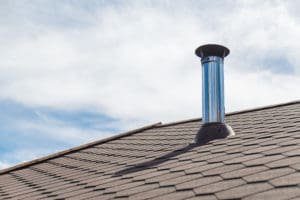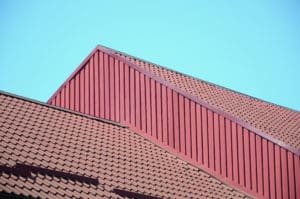Replacing your roof is a significant investment and a decision that should not be taken lightly. Before embarking on such a project, there are several crucial aspects that you need to consider. Understanding the basics of roof replacement, evaluating your current roof condition, choosing the right roofing material, hiring a roofing contractor, and budgeting for the project are all essential steps in ensuring a successful roof replacement. Let’s explore each of these aspects in detail.
Understanding the Basics of Roof Replacement
Properly understanding the basics of roof replacement is the first step in making an informed decision. One fundamental aspect of roof replacement is recognizing the importance of roof maintenance. Regular maintenance is crucial for the longevity and performance of your roof. By addressing minor issues promptly, you can prevent them from turning into major problems that require a full roof replacement. It is recommended to have your roof inspected by a professional at least once every few years to identify any potential issues early on.
The Importance of Roof Maintenance
Maintaining your roof ensures its longevity and protects your home from water damage and other potential issues. Regular cleaning, gutter clearing, and inspection of shingles and flashing are some of the maintenance tasks you should perform periodically. By keeping up with maintenance, you can extend the lifespan of your roof and potentially avoid the need for replacement.
Lifespan of Different Roofing Materials
The lifespan of your roof depends on the type of roofing material used. Asphalt shingles, which are the most common roofing material, typically last between 20 to 25 years. Metal roofs have a longer lifespan, usually lasting between 40 to 70 years. Other materials like slate and tile can even last up to 100 years with proper care. Understanding the lifespan of different roofing materials can help you make an informed decision when selecting a material for your replacement roof.
When it comes to asphalt shingles, their popularity can be attributed to their affordability and ease of installation. These shingles consist of a fiberglass mat coated with asphalt and mineral granules. The granules provide protection against UV rays and enhance the shingles’ durability. However, over time, the granules may start to wear off, making the shingles more susceptible to damage from the elements. Regular inspection and maintenance can help identify any signs of granule loss and allow for timely repairs or replacement.
Metal roofs, on the other hand, offer a range of benefits beyond their impressive lifespan. They are highly resistant to fire, insects, and rot, making them a durable choice for homeowners. Additionally, metal roofs are known for their energy efficiency, as they reflect solar heat, reducing the need for excessive air conditioning. They are also environmentally friendly, as they are often made from recycled materials and can be recycled at the end of their lifespan. However, it’s important to note that metal roofs can be more expensive upfront compared to other materials, but their long-term benefits often outweigh the initial cost.
Evaluating Your Current Roof Condition

Before replacing your roof, it is important to evaluate its current condition. There are several signs that indicate your roof may need replacement. One of the most obvious signs is age. If your roof is nearing the end of its expected lifespan or has surpassed it, replacement should be strongly considered. Additionally, visible damage such as missing or curling shingles, leaks, or sagging areas are indicators that your roof may need replacement.
Furthermore, it’s crucial to consider the environmental factors that your roof has been exposed to over the years. Extreme weather conditions, such as heavy rain, snow, or high winds, can accelerate the deterioration of your roof. Similarly, the presence of nearby trees can lead to issues like fallen branches or excessive debris accumulation, impacting the overall health of your roof.
Signs Your Roof Needs Replacement
There are several signs that your roof may need replacement. Keep an eye out for leaks or water stains on your ceilings and walls. Peeling paint or wallpaper can also be a result of water damage caused by a failing roof. Another sign is the presence of granules from your shingles in your gutters, which indicates the aging and wearing out of the roofing material. If you identify any of these signs, it is advisable to have a professional roofing inspection to assess the extent of the damage.
Moreover, pay attention to any sudden spikes in your energy bills, as a poorly insulated or damaged roof can lead to heat loss during the winter and increased cooling costs in the summer. This could be a sign that your roof is no longer providing adequate protection and insulation for your home, warranting a closer inspection by a professional.
Professional Roof Inspection
When evaluating your roof, it is recommended to have a professional roofing inspection. A professional will be able to assess the condition of your roof thoroughly and provide you with an accurate assessment of whether replacement is necessary. They can identify any underlying issues that may not be visible to the untrained eye and guide you towards the most suitable course of action.
Additionally, a professional inspection can help you understand the overall structural integrity of your roof and whether any localized repairs can extend its lifespan. By investing in regular inspections, you can catch potential issues early on and avoid more extensive and costly repairs down the line, ultimately ensuring the longevity and performance of your roof.
Choosing the Right Roofing Material

Choosing the right roofing material for your replacement roof is a crucial decision that will impact the longevity, energy efficiency, and aesthetics of your home. There are several factors to consider when making this choice.
When it comes to choosing the roofing material for your replacement, there are several important factors to consider. One of the most significant factors is the climate in your area. Different roofing materials perform differently in various climates. For example, asphalt shingles are a popular choice in areas with moderate climates, while metal roofing is more suitable for areas prone to high winds and extreme weather conditions.
Another factor to consider is the architectural style of your home. The roofing material you choose should complement the overall design and enhance the curb appeal of your property. For instance, slate roofing is often favored for its elegant and timeless look, making it a perfect choice for historic or upscale homes.
Of course, your budget is also an essential consideration. Different roofing materials come with different price tags, and it’s crucial to find a balance between cost and quality. While asphalt shingles are generally the most affordable option, they may not offer the same longevity as more expensive materials like metal or slate roofing.
Maintenance requirements should also be taken into account. Some materials, like asphalt shingles, are relatively low-maintenance and require only periodic inspections and repairs. On the other hand, materials like slate roofing may require more specialized maintenance and occasional replacement of individual tiles.
Pros and Cons of Popular Roofing Materials
- Asphalt Shingles: Asphalt shingles are durable, cost-effective, and available in various styles and colors. However, they have a relatively shorter lifespan compared to some other materials. They are also susceptible to damage from extreme weather conditions.
- Metal Roofing: Metal roofs are highly durable, energy-efficient, and can last for several decades. They are more expensive upfront but offer long-term savings in terms of energy efficiency and reduced maintenance costs. Metal roofs are also lightweight and resistant to fire, making them a popular choice in areas prone to wildfires.
- Slate Roofing: Slate roofs are known for their elegance and longevity, with a lifespan that can exceed 100 years. They offer excellent durability and are resistant to fire, rot, and insects. However, they are costly and require professionals with specific expertise for installation. The weight of slate roofing also requires a sturdy structural support system.
- Tile Roofing: Tile roofs are aesthetically pleasing, last for several decades, and are resistant to insects, rot, and fire. They come in a variety of styles and colors, allowing homeowners to achieve a unique and personalized look. However, they are heavy and require a specific structural support system. Additionally, individual tiles may crack or break over time and need to be replaced.
By carefully considering these factors and weighing the pros and cons of each roofing material, you can make an informed decision that meets your specific needs and ensures the long-term protection and beauty of your home.
Hiring a Roofing Contractor

Finding a reliable roofing contractor is essential to ensure a professional and successful roof replacement. Take the time to research and interview potential contractors before making a final decision.
Replacing a roof is a significant investment in your home, so it’s crucial to choose a contractor who is experienced, trustworthy, and reliable. A reputable contractor will not only provide quality workmanship but also offer guidance and expertise throughout the entire process. By thoroughly vetting potential contractors, you can have peace of mind knowing that your roof is in good hands.
Tips for Finding a Reliable Contractor
When searching for a roofing contractor, consider the following tips:
- Ask for recommendations from friends, family, or neighbors who have recently had their roofs replaced.
- Check online reviews and ratings to get an idea of a contractor’s reputation.
- Request proof of licenses and insurance to ensure the contractor is legitimate and properly covered.
- Obtain multiple quotes to compare prices and services.
- Ask for references and follow up with them to gain insights into the contractor’s work quality and professionalism.
Additionally, it’s beneficial to visit ongoing or completed projects by the contractor to assess the quality of their work firsthand. This will give you a better understanding of their craftsmanship and attention to detail, helping you make an informed decision.
Questions to Ask Your Potential Contractor
When interviewing potential contractors, ask them the following questions:
- How long have you been in business?
- What certifications and qualifications does your team possess?
- Do you provide warranties for your work?
- Can you provide a detailed estimate?
- What is the expected timeline for the project?
Furthermore, inquire about the materials and techniques they plan to use for your roof replacement. A reliable contractor will be transparent about the products they use and explain why they are the best choice for your specific needs. Open communication and clarity on all aspects of the project are key to a successful roofing experience.
Budgeting for Your Roof Replacement

Ensuring that you have a clear understanding of the costs involved in a roof replacement project is crucial for effective budgeting. The cost of roof replacement varies depending on several factors.
One important factor to consider when budgeting for a roof replacement is the timeline of the project. Roof replacements can be affected by seasonal factors, such as extreme weather conditions or high demand during certain times of the year. Planning your roof replacement during off-peak seasons may result in cost savings and quicker project completion.
Estimating the Cost of Roof Replacement
The cost of replacing a roof depends on factors such as the size of the roof, the complexity of the design, the chosen roofing material, and the region you are in. It is advisable to obtain multiple quotes from different contractors to compare prices. However, it is important to prioritize quality and reputation when making a decision, as the cheapest quote may not always be the best option.
Another aspect to consider when estimating the cost of roof replacement is the potential for unexpected expenses. Once the roofing project begins, unforeseen issues such as water damage, structural problems, or the need for additional repairs may arise, impacting the overall cost. It is wise to set aside a contingency fund in your budget to account for any surprises that may occur during the roof replacement process.
Understanding Your Roofing Estimate
When reviewing roofing estimates, pay attention to the breakdown of costs. Make sure that the estimate includes all necessary materials, labor, and permits. Understand any warranty details and what is covered under the warranty. If there are any unclear or confusing aspects, don’t hesitate to ask the contractor for clarification.
By understanding the basics of roof replacement, evaluating your current roof condition, choosing the right roofing material, hiring a reliable contractor, and effectively budgeting for the project, you can ensure a successful roof replacement that will protect your home for years to come.





